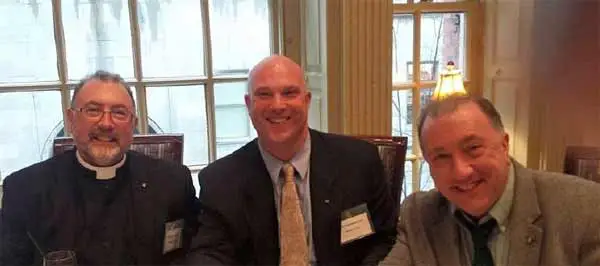The remains of an Irish emigrant who died 183 years ago in the Duffy’s Cut massacre in America was finally laid to rest in Co Tyrone in June 2016.
Catherine Burns was 29 years old when she emigrated to America with her father-in-law John Burns, following the death of her husband.
It took them two months to cross the Atlantic Ocean on the ship John Stamp as they hoped for a better future in the New World.
Tragically within two months of arriving, both Catherine and John had both died.

Catherine was among 57 victims of the Duffy’s Cut massacre near Philadelphia. They had worked on the construction of the Philadelphia and Columbia Railroad for an Irish contractor called Philip Duffy.
Conditions were poor and an outbreak of cholera spread among the workforce. Within six weeks they had all died, some from the disease but it is believed that most suffered a more violent death.
Experts say that based on newspaper accounts, mortality statistics, and railroad company documents, it is possible that some of the workers were killed by local vigilante gangs who had hostile attitudes towards the Irish and didn’t want them spreading the disease.
During this period there was a culture of prejudice towards Irish Catholics and the workers were denied help when they were sick and denied dignity after they died.
Their bodies were buried in an unmarked mass grave and forgotten about for over 100 years.
In 2002 the story of the emigrants came to light thanks to the Duffy’s Cut project, which seeks to find out as much as possible about the Irish workers who died in 1832.
The project is led by twin brothers Rev. Frank Watson and William Watson, PHD.

They have excavated the site and continue to study the archives as they look to find out more about not only those who died, but also the early 19th century attitudes in Pennsylvania towards immigration, disease and industry.
As the archaeological search continues they hope to uncover more information that may indicate the causes of death of the victims and help to identify the remains.
They know that Catherine wasn’t buried in the mass grave but was buried separately nearby, as was the body of 18-year-old John Ruddy. Ruddy was brought back to Donegal to be reburied in 2013.
Rev. Watson, who is pastor of the Christ Lutheran Church of Whiting, New Jersey, USA said: “All of those recovered to this date were murdered by blunt force trauma, and one was both axed and shot in the head.
None of the murdered show defensive wounds, indicating that they may have been tied up prior to being murdered.
“The last person recovered at Duffy’s Cut in the summer of 2010 was a woman aged to around 30 years of age by our physical anthropologist, Dr. Janet Monge of the University of Pennsylvania Museum.
“This woman’s remains showed that she was used to heavy labor, similar to the men buried alongside of her in the 1832 railroad fill. She suffered perimortem (at the time of death) blunt force trauma to her head, as did the men (they were beaten to death).”
Catherine’s bones were brought back to Ireland thanks to the Duffy’s Cut project.
While they are unable to find Catherine’s relatives because there is no record of her maiden name, they believe that taking her back to Ireland was the right thing to do.
William Watson, who works as a History Professor at Immaculata University, Pennsylvania, said: “It’s the symbolism of it, we would want someone to do that for us.”
There was an Irish wake featuring music and dance in Clonoe, which followed by a funeral mass in Clonoe church, Coalisland, County Tyrone, Northern Ireland at 12.30 pm on Sunday, July 19th.
The Rev. Benny Fee will perform the service. Rev Fee said: “She came from a poorer Ireland and time than we enjoy today, so let us who have so much now, let us be generous to her even in death.”
Father Fee also said that the service gave people the opportunity to remember all of the victims who were killed and buried without ceremony.
He said: “Her story of hopes dashed and dreams shattered is not unique. So in honouring the homecoming of Catherine we are honouring countless other exiles who sailed out of Ireland in the hope of a new life far from home but did not find the streets paved with gold.”
For more information about the Duffy Cut project take a look at their Facebook page
Below is an interview of Fr. Benny Lee by Q Radio.
More popular articles and videos
The real life mystery of what Maureen O’Hara whispered to make John Wayne look so shocked
Matt Damon winning hearts and minds with charm assault on Ireland
Action hero Tom Cruise was once attacked by an old man in a Kerry pub
Liam Neeson speaks about his late wife in emotional interview
Dating site explains why Irish men make wonderful husband material
Billy Connolly says public should ignore politicians and listen to comedians
Take a look inside Hollywood star Saoirse Ronan’s stunning Irish home
[includeme file=”wp-content/plugins/include-me/videos.html”]